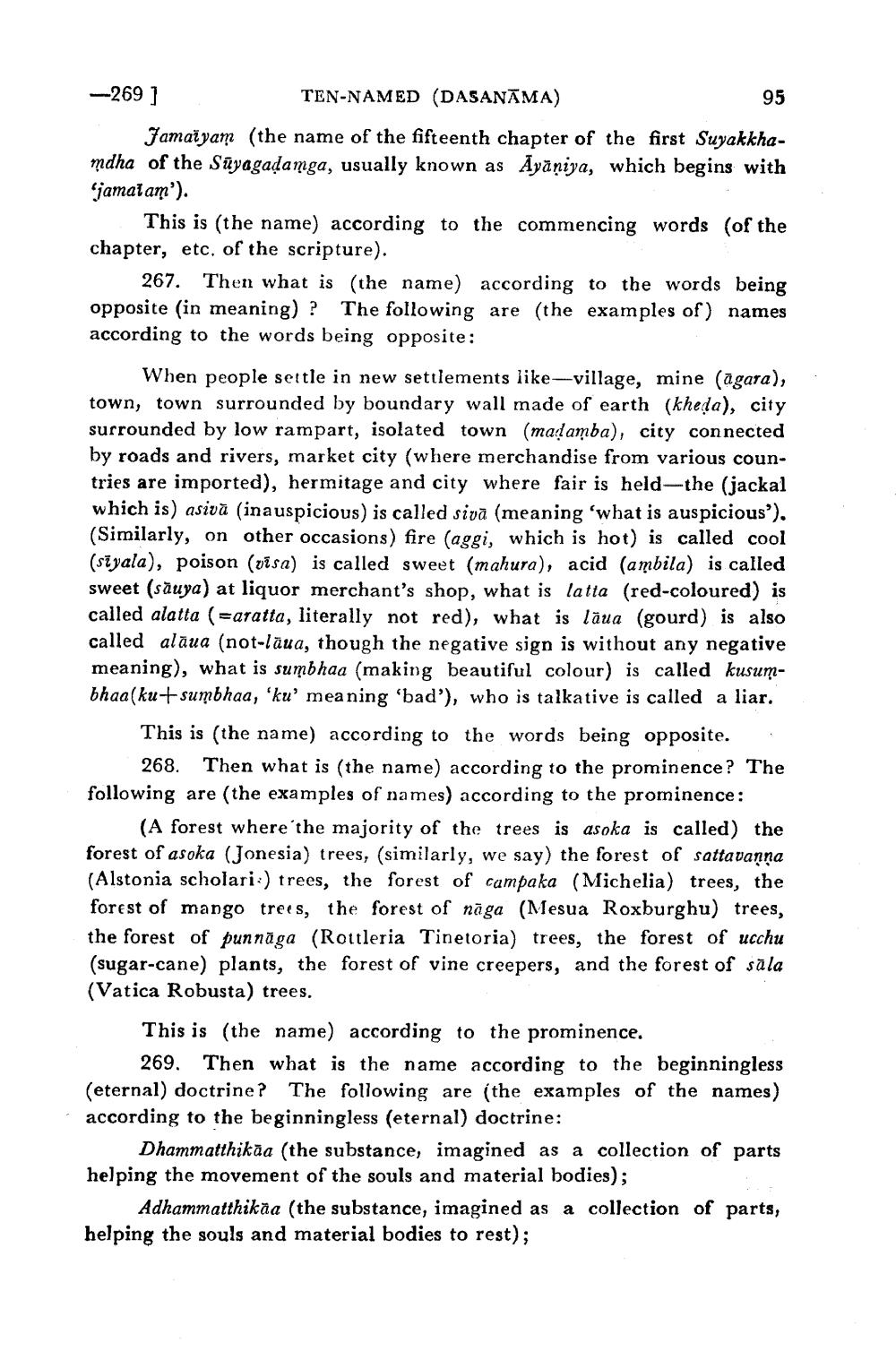________________
--269 ] TEN-NAMED (DASANĀMA)
95 Jamaïyam (the name of the fifteenth chapter of the first Suyakkhamdha of the Süyagadamga, usually known as Āyāņiya, which begins with jamaiam').
This is (the name) according to the commencing words (of the chapter, etc, of the scripture).
267. Then what is (the name) according to the words being opposite (in meaning)? The following are (the examples of) names according to the words being opposite:
When people settle in new settlements like-village, mine (agara), town, town surrounded by boundary wall made of earth (kheda), city surrounded by low rampart, isolated town (madamba), city connected by roads and rivers, market city (where merchandise from various countries are imported), hermitage and city where fair is held the (jackal which is) asivă (inauspicious) is called siva (meaning 'what is auspicious'). (Similarly, on other occasions) fire (aggi, which is hot) is called cool (siyala), poison (visa) is called sweet (mahura), acid (ambila) is called sweet (săuya) at liquor merchant's shop, what is latta (red-coloured) is called alatta (=aratta, literally not red), what is lāua (gourd) is also called alaua (not-laua, though the negative sign is without any negative meaning), what is sumbhaa (making beautiful colour) is called kusumbhaa(ku+sumbhaa, ku' meaning 'bad'), who is talkative is called a liar.
This is (the name) according to the words being opposite. .
268. Then what is the name) according to the prominence? The following are (the examples of names) according to the prominence:
(A forest where the majority of the trees is asoka is called) the forest of asoka (Jonesia) trees, (similarly, we say) the forest of sattavanna (Alstonia scholari) trees, the forest of campaka (Michelia) trees, the forest of mango trees, the forest of nāga (Mesua Roxburghu) trees, the forest of punnāga (Rottleria Tinetoria) trees, the forest of ucchu (sugar-cane) plants, the forest of vine creepers, and the forest of sala (Vatica Robusta) trees.
This is (the name) according to the prominence.
269. Then what is the name according to the beginningless (eternal) doctrine? The following are (the examples of the names) according to the beginningless (eternal) doctrine:
Dhammatthikāa (the substance, imagined as a collection of parts helping the movement of the souls and material bodies);
Adhammatthikaa (the substance, imagined as a collection of parts, helping the souls and material bodies to rest);




